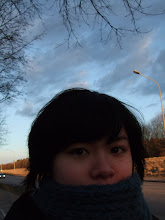
We-think: The power of mass creativity by Charles Leadbeater
[W]e are witnessing the birth of a different way of approaching how we organise ourselves, one that offers significant opportunities to improve how we work, consume and innovate. (24)
Holding this positive attitude toward the web and the world the web is creating, in his latest book We-Think, Charles Leadbeater puts together a recipe for today's generation to either confront or embrace the changes that come along with the emergence of a global virtual society.
The ground rule of the We-Think recipe is to share, as Leadbeater titles his first chapter: You are what you share. Sharing itself is not a novel idea at all. However, "sharing"--the idea as well as the action--is being maximized and reaching a whole new level in the world of highly connectivity and dense networks. The web amplifies the possibility of sharing, makes it much easier than ever, and encourages such action with the feedback, comment, praise--or, using Leadbeater's word, "recognition"--from peers that are generated in the process of sharing.
The ingredients for the recipe are listed as well: a core (providing the original concept/project/platform/scheme), connectivity (among creators, users, peers, participants), being creative, willing to contribute, and collaboration (organizing participants, managing and negotiating the input as well as the output). Again, none of the ingredients is new or exotic. Yet Leadbeater emphasizes and strengthens the importance of these key elements by sorting out a detailed report on many real cases that correspond to the We-Think recipe. His report covers open sources (Linux), collective intelligence (Wkipedia), games (I Love Bees, World of Warcraft, The Sims), social media (MySpace, YouTube), projects that brings the professional, the amateur, and the pro-am together (Open Architecture Network, Instructables), financial/human-resource/political mobilization (Howard Dean's 2004 presidential campaign), and many other examples.
Like many other authors who writes cookbooks, Charles Leadbeater needs to try out his dish first. What is really interesting here is that We-Think the book is itself the recipe, as well as an experimental practice of the recipe. Leadbeater made his preliminary draft of We-Think available online and free to download, he created a wiki page for the We-Think project, then he collected responses, critique, questions, suggestions from hundreds of intrigued contributors around the world, and he developed, refined, modified his We-Think recipe either according to, based on, or in respond to the feedback he received.
The decision to try out the recipe with his book, in real life, is quite worth noting. First, such decision reveals the central optimism of Leadbeater in his take on the Internet, its consequential creation as well as side effects. Second, by executing his concept, Leadbeater gives credits to not only the recipe (he actually believes in it) but also the people out there--the enthusiastic ones can come along join the discussion, or make contributions to the project, while the skeptical ones can witness an actual practice progressing. Third, making his We-Think practice public, Leadbeater alters the traditional, single-direction way of collecting information. Now information are transited back and forth among peers, critics, and Leadbeater, in the connections built upon his call to exercise the We-Think recipe.
Being a big fan of We-Think, Leadbeater still tries to be objective and reflective. He questions, "How far will We-Think spread?" and then, "For better or worse"? Carefully looking into different societal fields, Leadbeater recognizes that some aspects (design, research, creative works, public services) are prone to be affected by and involved in the chemistry of We-Think while other parts are less likely to follow the guidance (agriculture, mining, quarrying, basic energy production). Yet overall Leadbeater is rather enthusiastic about We-Think and its effects. He claims that the spread of We-Think recipe can make a profound impact on human life--especially more influential for people in developing countries, and that "Yes, We-Think will be good for democracy; yes, We-Think will be good for equality; yes, We-Think will be good for freedom."
A single instruction for diet cannot account for the complete health of everybody, so does the We-Think recipe. Leadbeater is aware of the fact. In the last chapter of his book, he writes that "it would be naive to imagine that a new way of organizing ourselves will necessarily be exclusively positive" (232).
For example, sharing, the fundamental base for the We-Think recipe, can be its Achilles tendon. Sharing (either the idea or the action) is open for people to utilize it, to make good use of it, or even to abuse, misuse it. One can achieve very opposite ends with amazingly similar ideas/tools/means. The hostile spreading of viruses, the scheming of criminal acts/terrorist attacks/conspiracy, or the intrusion of others' privacy (accidental or intended) are not at all hard to imagine in the world the web is creating. The challenge this kind of negativity pushes forward is not to stop believing in the ethics of sharing but "to create a sense of order and security without undermining our capacity for sharing" (235).
Writing with a barely concealed adoration for the interconnected world that keeps growing, expanding, and changing, Charles Leadbeater presents a dish that is rather simple and approachable than the actual flows--untrimmed, outbursting, and enormous--running through the web. This cookbook is more of a welcoming introduction that slowly leads people to the gate behind which sits the real labyrinth of mapping the virtual society and reasoning the logic(s) of living within such society. Without doubts, We-Think is a good start point to initiate the discussion about the future, the implication, and the meaning for mankind to situate themselves in a world of collective collaboration, massive connectivity, and sharing. Leadbeater opens up the banquet with the first course: We-Think. The rest relies on others to cook, to experiment, to produce, to create, all together.

